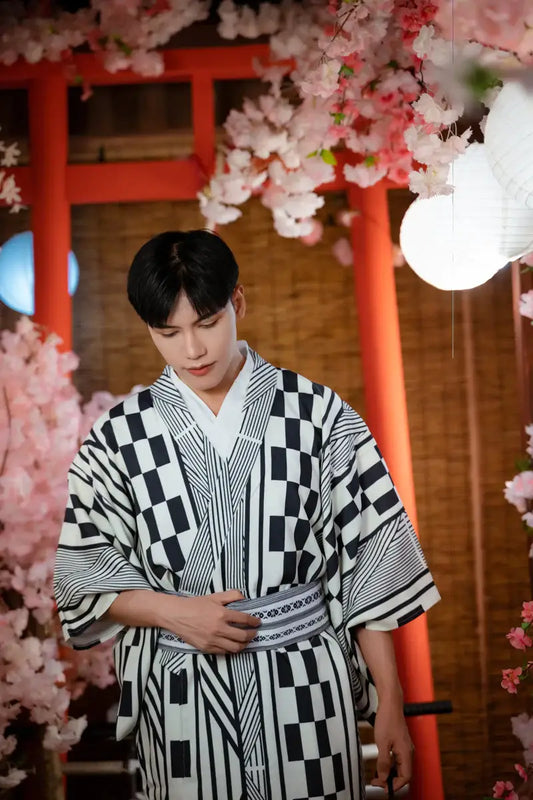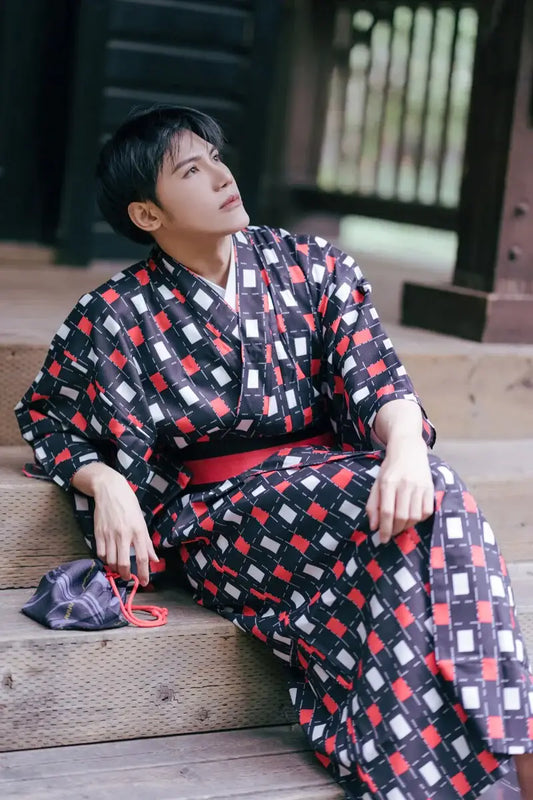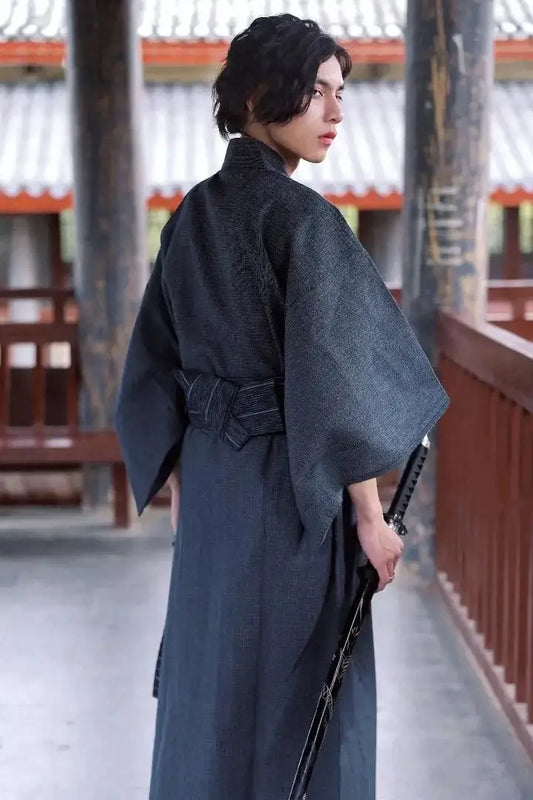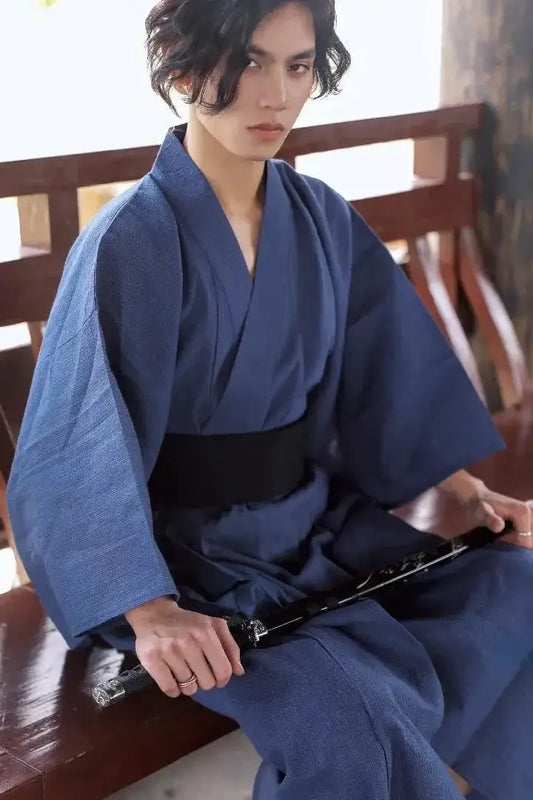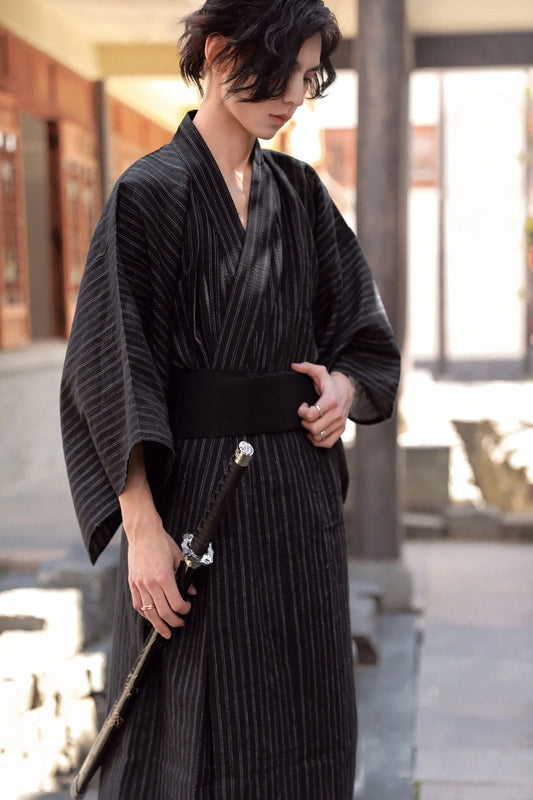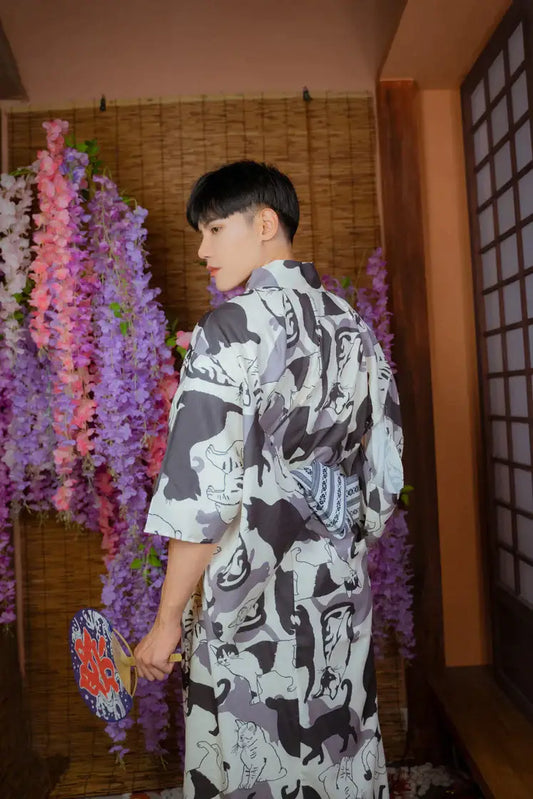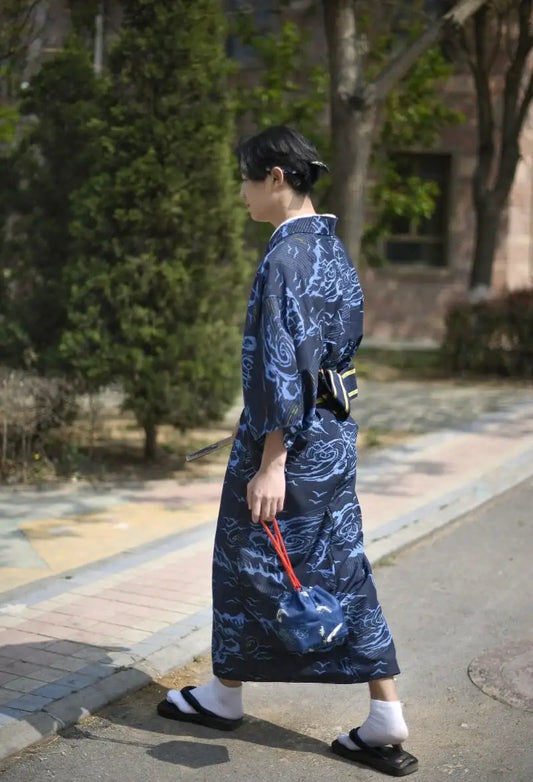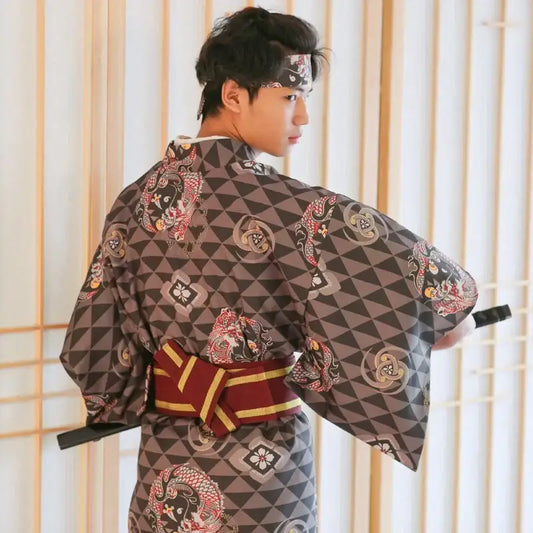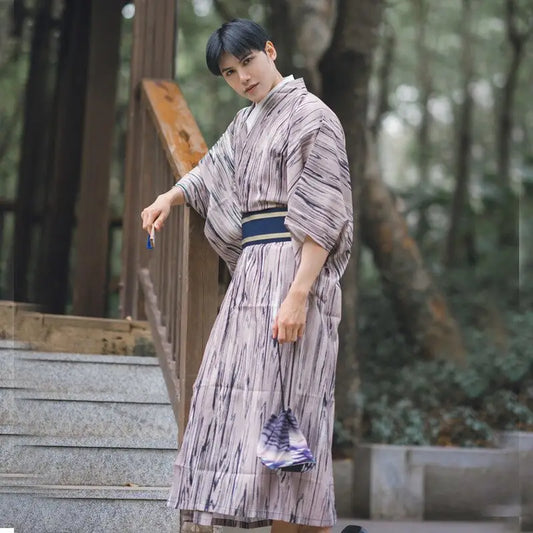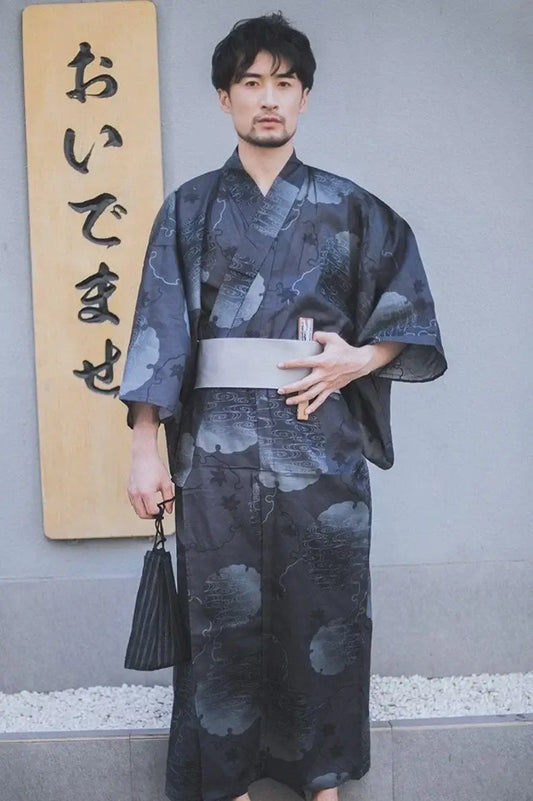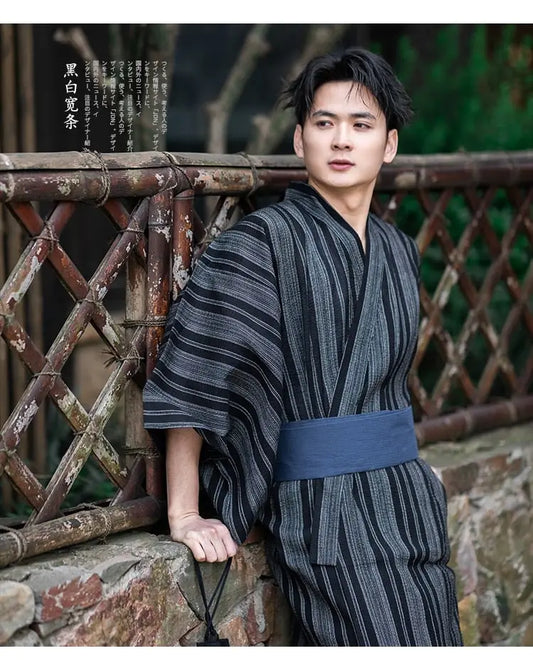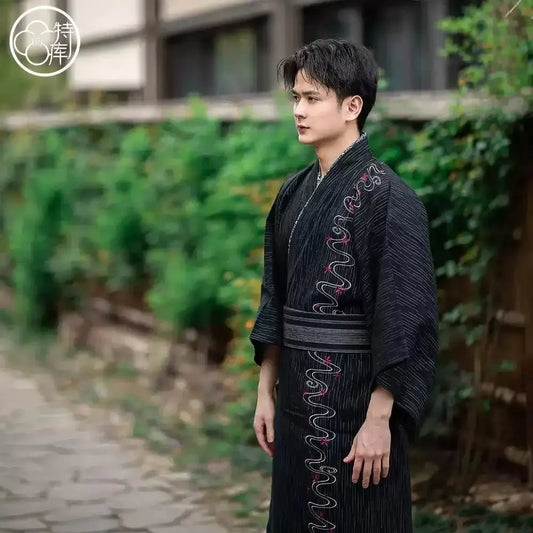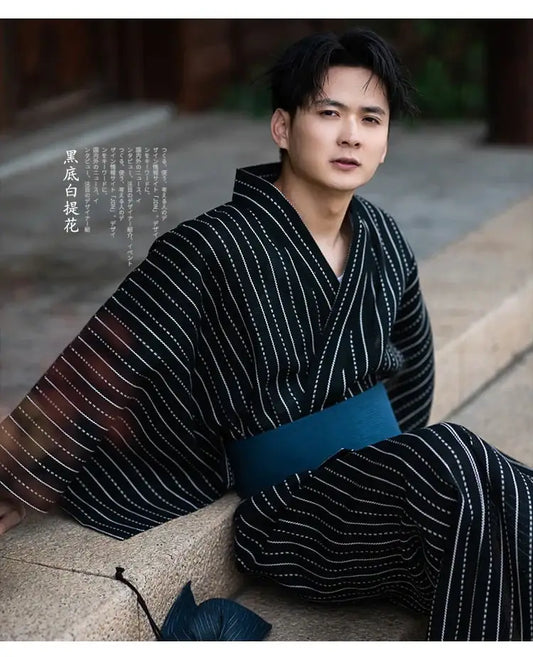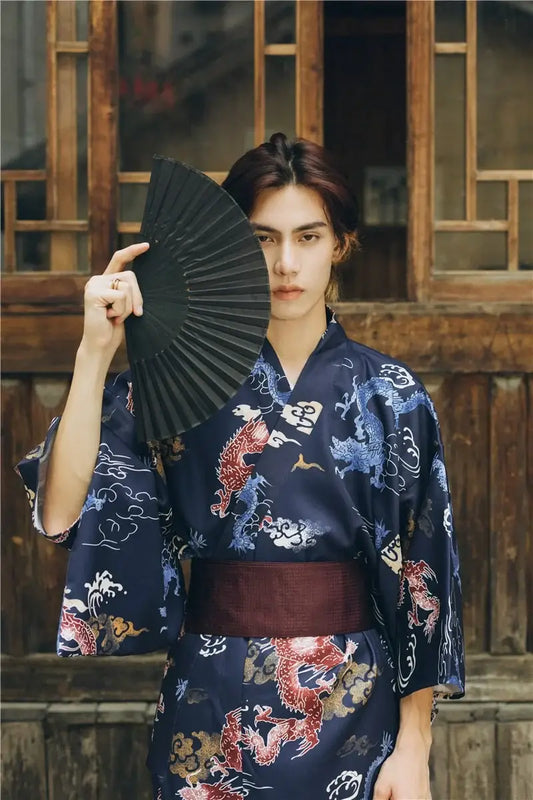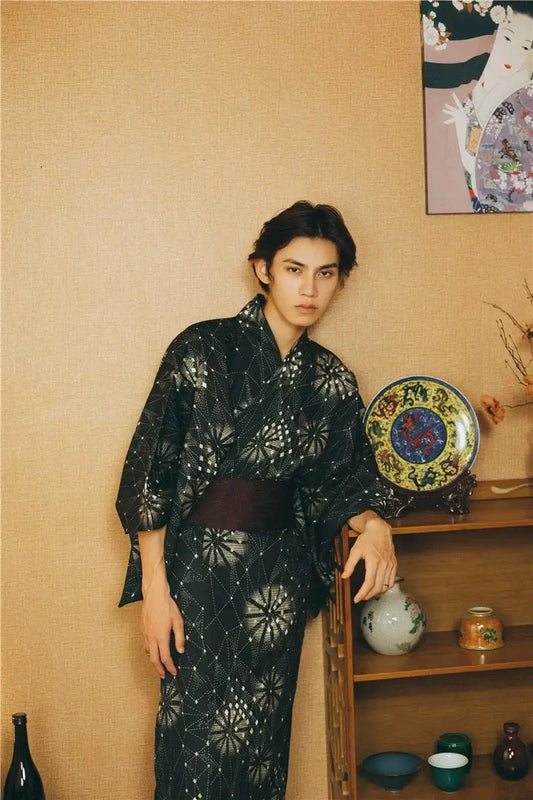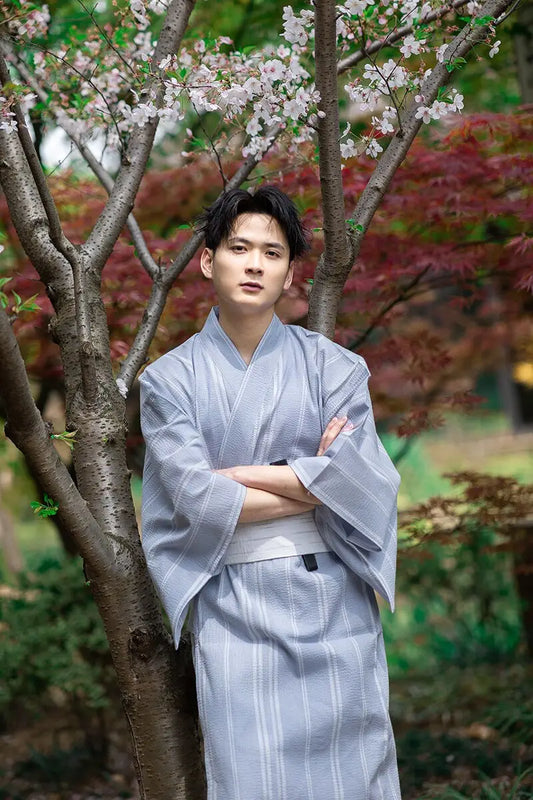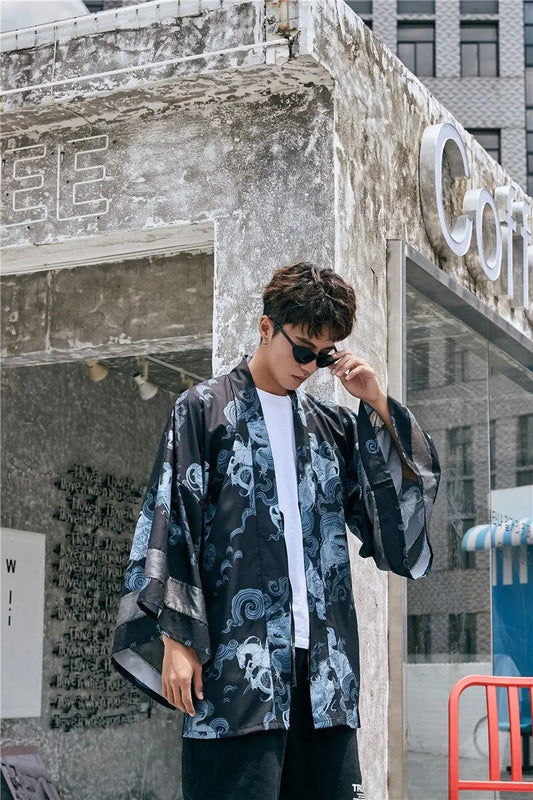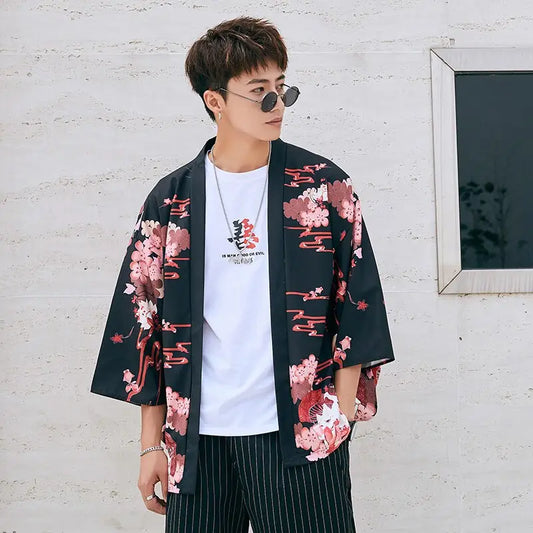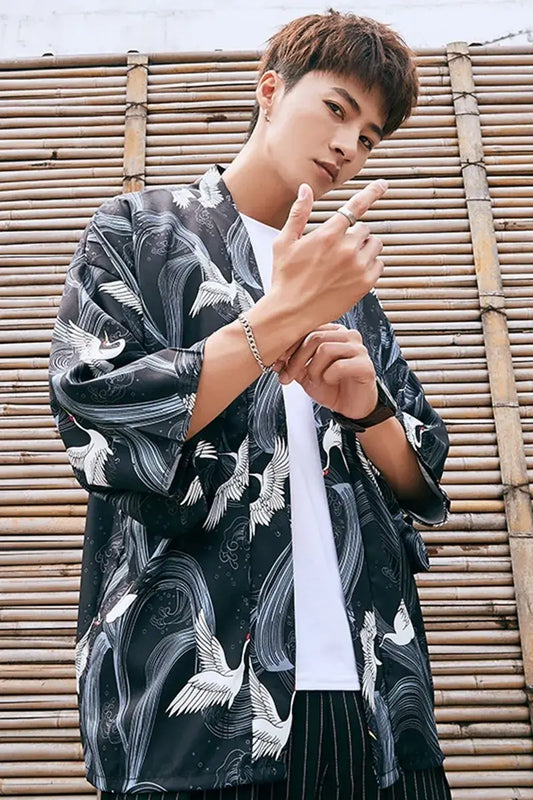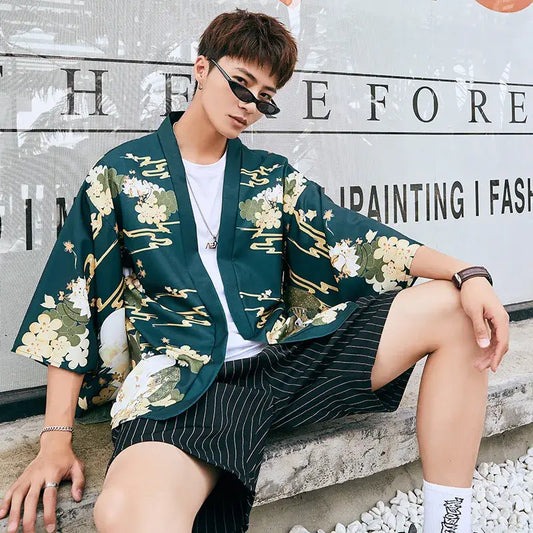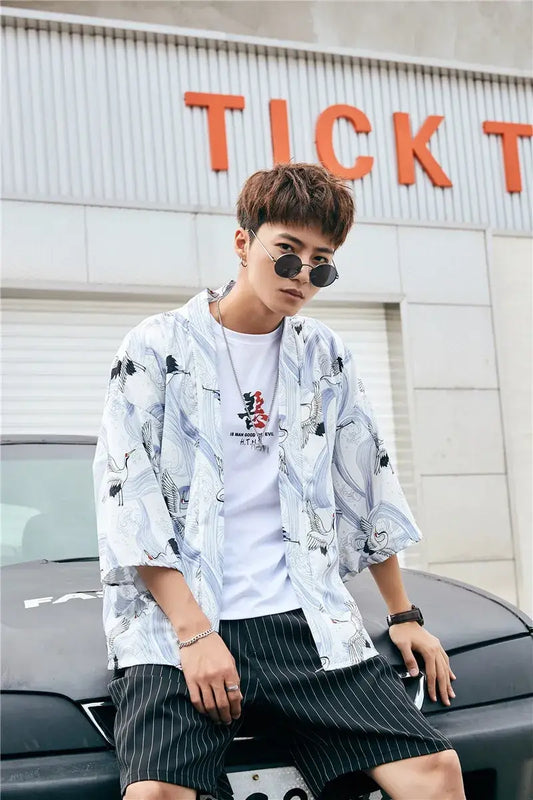Embrace Tradition with Men's Kimonos
The design of the kimono for men show fewer designs than the kimono worn by women. The kimono for men has sleeves that are attached to the body and are less deep than the kimono sleeves worn by women.
When the modern era came, the fabric of the kimono for men became the guide for distinction. Kimonos for men were matte and featured subtle patterns. Although they were mostly dark colours, other kimonos had bright colours like green and blue.
While a woman's kimono requires about ten accessories to dress up, men's outfits are more stripped down, with a maximum of five accessories (not including tabi socks and geta sandals).
Nowadays, the main differences between men's and women's kimonos are the patterns and the color. A man's kimono is dark and usually of one color: black, indigo blue, dark green, sometimes brown. Patterns, if any, are subtle, and are more likely to be found on informal kimonos.
The latter can be of brighter colors too: purple, green and lighter blue. Sumo wrestlers sometimes wear very bright colors, like fuchsia pink. In its shape, the men's kimono is differentiated by the attachment of the sleeves, the men's sleeves are almost completely connected to the rest of the kimono and closed, while the women's sleeves are widely open and very detached.
The most formal kimono for a man is black silk, with five kamon (one in the back, one on the back of each sleeve and one on each side of the chest). Then in order, the number of kamon makes a kimono a little less formal: three kamon (on the back and chest), one kamon (on the back).
A man can make almost any outfit more formal by wearing a hakama or haori.
How do men wear Kimono?
Kimonos for men include the Montsuki Hakama for ceremonial occasions and the Haori for going out and visiting. There is also the yukata, which is worn by both men and women as informal attire at home, in the ryokan or to attend local festivals.
Men's kimonos usually have more muted colours and are typically made of matte fabrics. The sleeves of the men's kimono are attached to the body of the kimono, leaving no more than a few centimetres free at the bottom, unlike the very low sleeves worn by women, which are usually not attached to the body of the kimono.
Men's sleeves are less deep than women's kimono sleeves to accommodate the obi around the waist underneath, while women's kimonos allow the long, unattached lower part of the sleeve to hang over the obi without getting in the way. Men also wear zori, usually made of imitation plastic straw, but they do not have to wear tabi socks with their zori as women do.
Traditional style Kimono for men
The most formal kimono style is plain black silk with five kamon on the chest, shoulders and back. Slightly less formal is the three-kamon kimono.
Some older women and even fewer men still wear the kimono daily. Kimono for men are often worn at weddings, tea ceremonies and other very special or very formal occasions.
Professional sumo wrestlers are often seen in kimono as they are required to wear the traditional Japanese attire when performing in public.
Modern style Kimono for men
In the modern era, the main differences between kimonos for men are in the fabric. The typical men's kimono is a muted black, dark blue and green is common.
The fabrics are usually matte. Some have a subtle pattern, and textured fabrics are common in casual kimonos. Casual kimonos may be made in slightly lighter colours, such as lighter shades of purple, green and blue. Sumo wrestlers are occasionally known to wear fairly bright colours such as fuchsia.
Different Types of Men Kimonos
For men there are kimonos with various styles and features. Unlike women's kimonos, their clothing is quite simple.
The sleeves of the male kimono are attached to the body, only by a few independent centimeters at the bottom. The male sleeves are shorter than the female sleeves to accommodate the obi around the waist under them. Men's kimonos traditionally consist of five pieces:
- The typical male kimono is subdivided, and of dark colors: blacks, dark blues, greens, and browns are common. The fabrics are usually matte. Some have a subtle pattern.
- The more casual kimonos are commonly of textured fabrics, may be of slightly brighter colors such as: light purples, greens and blues.
- Sumo wrestlers' kimonos have occasionally been known to be brighter colors, such as fuchsia.
- The most formal style of kimono is plain black silk with five kamons on the chest, shoulders and back. Slightly less formal is the three kamon kimono. These are usually paired with white interiors and accessories.
- During the summer, a much easier-to-wear, lightweight and casual cotton kimono, known as a yukata, is in style. Sometimes the yukata can also be combined with a jacket over it. This jacket is very practical as some have a pocket on the inside for storage and small strings to tie the jacket.
- The main distinction between men's kimonos is the fabric they are made of.
History of Men's Kimonos
Originally, the word kimono referred to all types of clothing.
Today's kimono took shape during the Heian period (794-1192). Since then, the basic shape of the kimono for both men and women has remained largely unchanged: a T-shaped, straight robe that reaches to the ankles, a collar, and wide sleeves.
When you stretch your arms horizontally from you, the sleeves fall from your wrist to about your hip (in some styles, the sleeves can even almost touch the floor). The robe is wrapped around the body, always with the left side over the right.
The kimono is held together by a sash-like belt, the obi. It is knotted at the back.
Over time, there have been many variations in color, fabric and style, as well as in accessories such as the obi.
Today, kimonos are preferably worn on special occasions, and mostly by women. Men often wear kimonos at weddings and for tea ceremonies. People also wear kimonos for certain sports, such as Kendō.
There are a large number of kimono hobbyists in Japan from whom one can take lessons in kimono wearing. Such lessons cover various topics: Picking out seasonally and event appropriate fabric and pattern, matching undergarments as well as accessories to the kimono, picking out and tying an obi, etc.
Most Japanese women would not be able to put on a kimono correctly without further assistance.
The typical outfit for women usually includes twelve or more individual pieces, each of which must be put on in a particular way. (Men's kimonos are significantly simpler, usually involving no more than five pieces plus socks and sandals).
Therefore, there are still professional kimono donners who can be hired to assist, especially for special occasions.
Members of this profession must obtain a license. They often work in hair salons, but usually come to customers' homes upon request.
There are still older women, and probably to a lesser extent men, who wear kimono on a daily basis. Professional sumo wrestlers must wear a kimono during public appearances outside the ring.
Nowadays, the kimono is rarely worn in public, mainly by geishas. The kimono also includes getas (wooden sandals), jewelry, and for short, i.e. hip-length, kimonos, a hakama. For men, netsuke (wooden figurines) may still be found, which served as a counterweight to the bag substitute Inrō.




